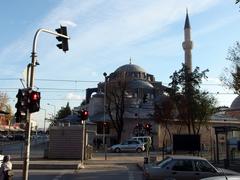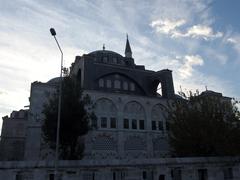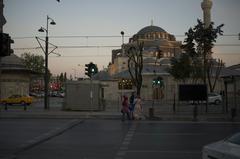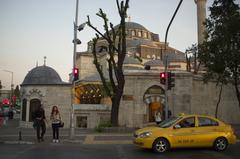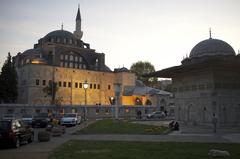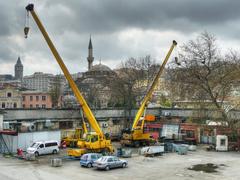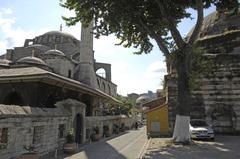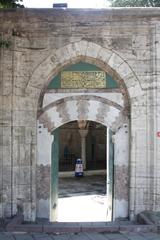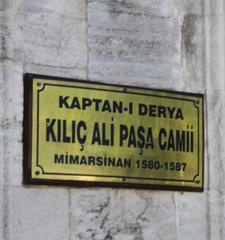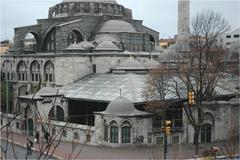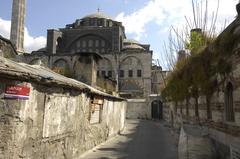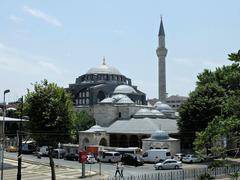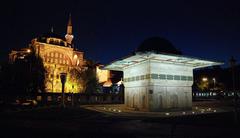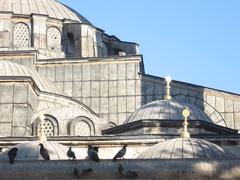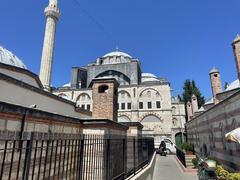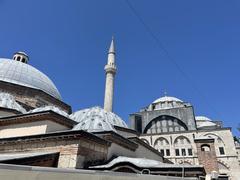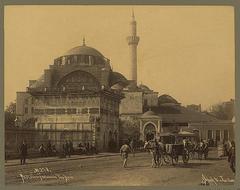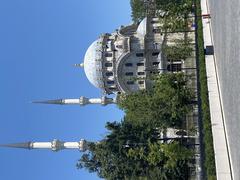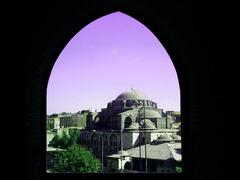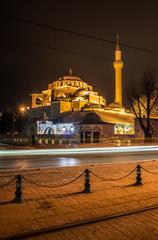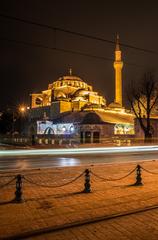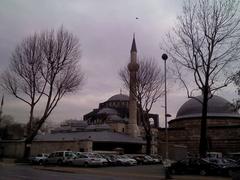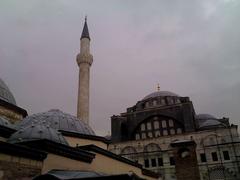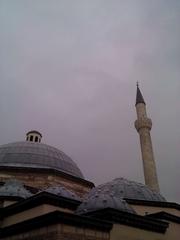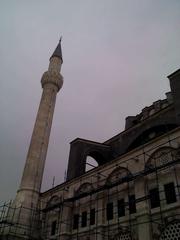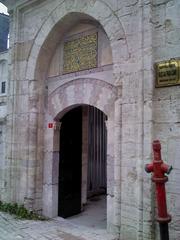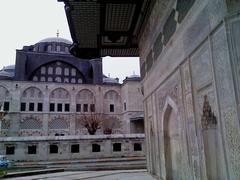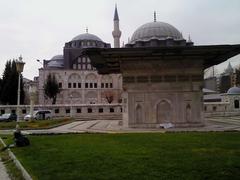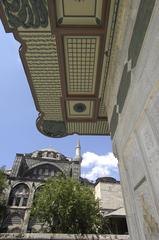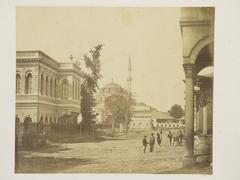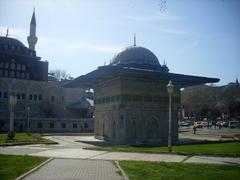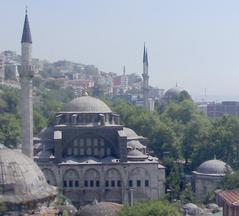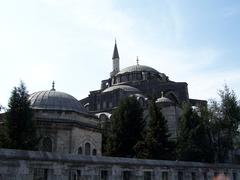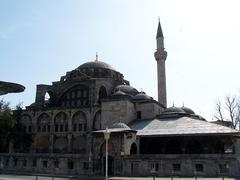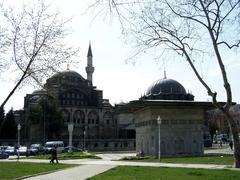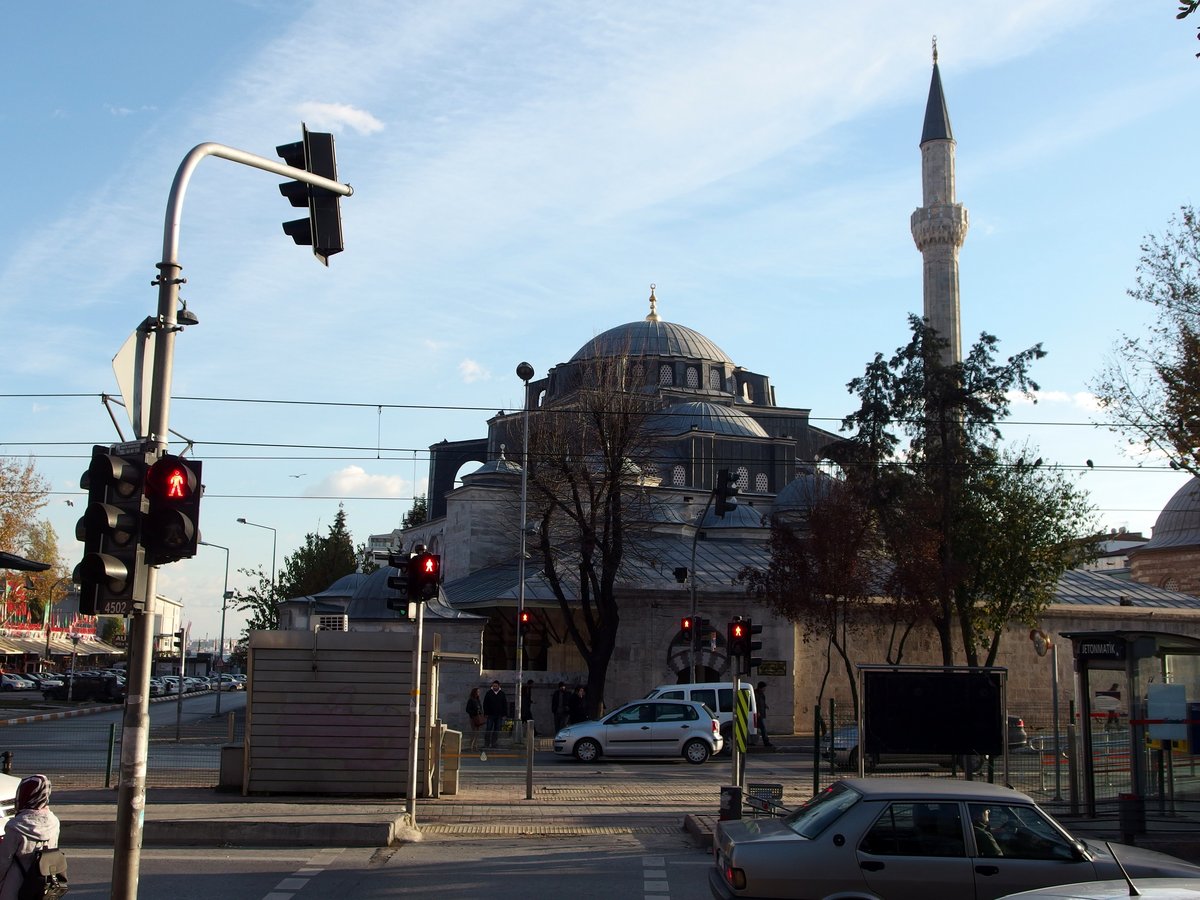
Comprehensive Guide to Visiting Kılıç Ali Paşa Camii, Istanbul, Türkiye
Date: 19/07/2024
Introduction
Kılıç Ali Paşa Camii, also known as the Kılıç Ali Pasha Mosque, is a remarkable historical and architectural landmark nestled in the vibrant Tophane district of Istanbul, Türkiye. Commissioned by the Ottoman admiral Kılıç Ali Pasha and designed by the legendary architect Mimar Sinan, this mosque is a testament to the zenith of Ottoman architectural and artistic achievements. Constructed between 1578 and 1580, the mosque not only symbolizes the maritime strength and cultural integration of the Ottoman Empire but also stands as a beacon of Islamic faith and heritage (source). Visitors from around the globe flock to this architectural marvel to witness its grandeur, intricate designs, and to delve into the rich history that it embodies. This comprehensive guide aims to provide an in-depth look into the history, architectural significance, and visitor information for Kılıç Ali Paşa Camii, ensuring a respectful and enriching experience for all.
Table of Contents
- Introduction
- History of Kılıç Ali Paşa Camii
- Restoration and Preservation
- Cultural and Religious Significance
- Notable Features and Artifacts
- Visiting Kılıç Ali Paşa Camii
- FAQ
- Conclusion
History of Kılıç Ali Paşa Camii
Origins and Construction
Kılıç Ali Paşa Camii, also known as the Kılıç Ali Pasha Mosque, is a significant historical and architectural landmark located in the Tophane district of Istanbul, Türkiye. The mosque was commissioned by Kılıç Ali Pasha, an Ottoman admiral of Italian origin who converted to Islam and rose to prominence in the Ottoman navy. The construction of the mosque began in 1578 and was completed in 1580. The renowned Ottoman architect Mimar Sinan, who is often regarded as one of the greatest architects in history, designed the mosque. Sinan’s influence is evident in the mosque’s classical Ottoman architectural style, which features a large central dome, semi-domes, and a spacious courtyard.
Architectural Significance
The Kılıç Ali Paşa Camii is a prime example of classical Ottoman architecture, reflecting the grandeur and sophistication of the period. The mosque’s design is heavily influenced by the Hagia Sophia, which is evident in its large central dome and the use of semi-domes to support the main structure. The central dome of the mosque measures approximately 12.7 meters in diameter and is supported by four massive piers. The interior of the mosque is adorned with intricate Iznik tiles, calligraphy, and stained glass windows, which add to its aesthetic appeal.
The mosque complex also includes a madrasa (Islamic school), a hamam (Turkish bath), a fountain, and the tomb of Kılıç Ali Pasha. The inclusion of these elements reflects the multifunctional nature of Ottoman mosque complexes, which served not only as places of worship but also as centers of education and social services.
Historical Context
The construction of Kılıç Ali Paşa Camii took place during a period of significant expansion and consolidation for the Ottoman Empire. The late 16th century was marked by the empire’s dominance in the Mediterranean, and Kılıç Ali Pasha played a crucial role in this maritime supremacy. As an admiral, Kılıç Ali Pasha led several successful naval campaigns, including the Battle of Lepanto in 1571, where he commanded the Ottoman fleet. Although the Ottomans were defeated in this battle, Kılıç Ali Pasha’s leadership was instrumental in preserving the core of the Ottoman navy.
The mosque’s construction can be seen as a testament to Kılıç Ali Pasha’s loyalty to the Ottoman Empire and his desire to leave a lasting legacy. The mosque also symbolizes the cultural and religious integration of converts to Islam within the Ottoman society, as Kılıç Ali Pasha himself was originally an Italian Christian named Giovanni Dionigi Galeni before converting to Islam.
Restoration and Preservation
Over the centuries, Kılıç Ali Paşa Camii has undergone several restorations to preserve its structural integrity and aesthetic beauty. One of the most significant restoration efforts took place in the early 20th century, during the reign of Sultan Abdul Hamid II. This restoration aimed to repair damage caused by earthquakes and general wear and tear. More recently, in the early 21st century, the mosque underwent another extensive restoration, which was completed in 2011. This restoration focused on reinforcing the structural elements, cleaning and restoring the Iznik tiles, and preserving the intricate calligraphy and stained glass windows.
The restoration efforts have been crucial in maintaining the mosque’s historical and architectural significance. Today, Kılıç Ali Paşa Camii stands as a well-preserved example of Ottoman architecture and continues to serve as a place of worship and a popular tourist attraction.
Cultural and Religious Significance
Kılıç Ali Paşa Camii holds significant cultural and religious importance for both the local Muslim community and visitors from around the world. As a functioning mosque, it continues to host daily prayers, Friday congregational prayers, and special religious events during Ramadan and other Islamic holidays. The mosque’s serene and spiritual atmosphere provides a space for worshippers to connect with their faith and seek solace.
For tourists and history enthusiasts, Kılıç Ali Paşa Camii offers a glimpse into the rich cultural and architectural heritage of the Ottoman Empire. The mosque’s intricate design, historical context, and the story of Kılıç Ali Pasha himself provide a fascinating narrative that enhances the visitor experience. The mosque complex, with its madrasa, hamam, and fountain, also offers insights into the multifunctional nature of Ottoman architectural complexes and their role in the social and educational life of the period.
Notable Features and Artifacts
One of the most notable features of Kılıç Ali Paşa Camii is its exquisite Iznik tiles, which are renowned for their vibrant colors and intricate patterns. These tiles adorn the interior walls of the mosque and are a testament to the high level of craftsmanship achieved during the Ottoman period. The calligraphy within the mosque, featuring verses from the Quran, is another highlight, showcasing the artistic and religious devotion of the time.
The mosque’s courtyard, with its central fountain, provides a tranquil space for reflection and relaxation. The fountain, used for ablution before prayers, is an essential feature of Islamic architecture and adds to the mosque’s overall aesthetic appeal. The tomb of Kılıç Ali Pasha, located within the mosque complex, is another significant feature. The tomb is a simple yet elegant structure, reflecting the humility and piety of the admiral.
Visiting Kılıç Ali Paşa Camii
Visitor Information
Visitors to Kılıç Ali Paşa Camii can explore the mosque and its surrounding complex, gaining insights into the architectural and historical significance of the site. The mosque is open to visitors outside of prayer times, and modest dress is required to enter. Guided tours are available, providing detailed information about the mosque’s history, architecture, and cultural importance.
- Visiting Hours: The mosque is generally open from 9:00 AM to 6:00 PM, but it is closed during prayer times.
- Ticket Prices: There is no entry fee for visiting the mosque.
- Dress Code: Visitors should dress modestly, with shoulders and knees covered. Women are encouraged to wear a headscarf.
- Accessibility: The mosque is accessible to visitors with disabilities, though some areas of the complex may be challenging to navigate.
Nearby Attractions
The location of Kılıç Ali Paşa Camii in the vibrant Tophane district allows visitors to explore other nearby attractions. Some notable sites include:
- Istanbul Modern Art Museum: A contemporary art museum showcasing Turkish and international artists.
- Galata Tower: A historic tower offering panoramic views of Istanbul.
- Tophane Park: A serene green space perfect for relaxation.
- Nusretiye Mosque: Another beautiful example of Ottoman architecture located nearby.
FAQ
-
What are the visiting hours for Kılıç Ali Paşa Camii? The mosque is generally open from 9:00 AM to 6:00 PM, but it is closed during prayer times.
-
Is there an entry fee for Kılıç Ali Paşa Camii? No, there is no entry fee for visiting the mosque.
-
What should I wear when visiting Kılıç Ali Paşa Camii? Visitors should dress modestly, with shoulders and knees covered. Women are encouraged to wear a headscarf.
-
Are guided tours available at Kılıç Ali Paşa Camii? Yes, guided tours are available and provide detailed information about the mosque’s history, architecture, and cultural importance.
Conclusion
In conclusion, Kılıç Ali Paşa Camii is more than just a place of worship; it is a symbol of the Ottoman Empire’s rich cultural, historical, and architectural heritage. From its origins and the genius of Mimar Sinan to its ongoing preservation efforts, the mosque continues to inspire and educate visitors about the grandeur of the Ottoman period. Its serene atmosphere, intricate Iznik tiles, and the story of Kılıç Ali Pasha himself offer a unique and immersive experience for history enthusiasts, tourists, and worshippers alike. As you explore the mosque and its surroundings, you are not only stepping into a significant historical site but also contributing to its preservation and appreciation. For more information and to plan your visit, be sure to check out the official website of the Turkish Ministry of Culture and Tourism and other related resources.
References
- Visiting Kılıç Ali Paşa Camii - History, Tickets, and Architectural Marvels in Istanbul, 2024, Unknown Author (source)
